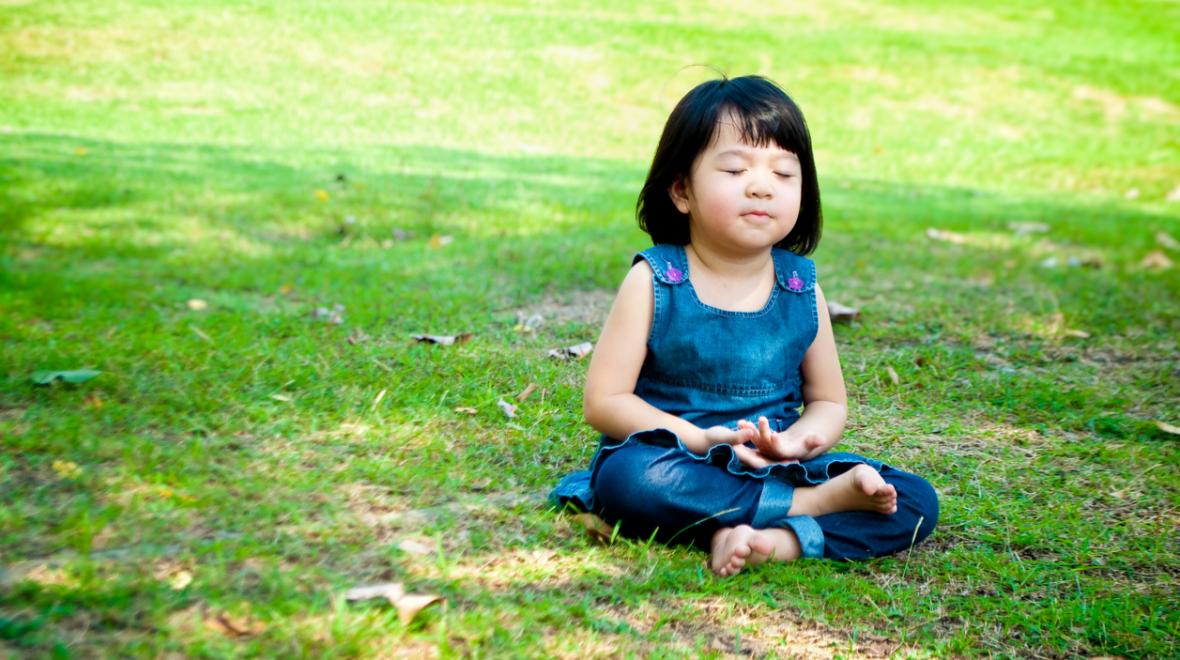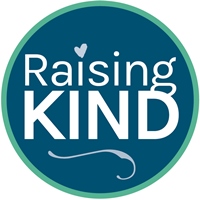
Everybody’s idea of calm is a little different. Perhaps yours looks like a peaceful vista of trees or sounds like a lovely, serene melody. Maybe you find that calm is a distant memory in a life full of lists and destinations.
For today’s families, many therapists offer mindfulness training as a path. The path may act as a route toward a specific goal or as a balm for stress in ordinary life.
Mindfulness comes out of the Asian traditions of Buddhism, yoga and meditation, but it now happens in hospital rooms and classrooms with a completely secular bent. Like many profound ideas, it is slippery. Everyone’s definition is a bit different. Here is one pioneer’s recipe:
“Mindfulness means paying attention in a particular way; on purpose, in the present moment and nonjudgmentally,” writes author Jon Kabat-Zinn, Ph.D., a pioneer in using mindfulness for stress management.
One of the biggest names in the growth of mindfulness within academic psychology, Kabat-Zinn has taught mindfulness training since the 1980s. (Kabat-Zinn and his wife, Myla, will speak at Town Hall in Seattle on Jan. 24 as part of ParentMap’s lecture series.) Medical research shows that this kind of training can reduce stress and aid patients with a variety of problems, including migraine headaches. And new research points to the role mindfulness can play in helping students learn.
“Mindful parenting is the hardest job on the planet, but it’s also one that has the potential for the deepest kind of satisfactions … and the greatest feelings of interconnectedness and community and belonging,” Kabat-Zinn said in an interview in Yes magazine.
Mastering mindfulness
Mindfulness training can vary. Kabat-Zinn offers his own mindfulness-based stress reduction (MBSR) training as an eight-week class or an intensive nine-day program. His website lists 22 people in Washington state who are trained in MBSR and can teach it to others.
The University of California at Los Angeles offers a six-week course through its Mindful Awareness Research Center. Traveling weekend workshops also come through Seattle offering shorter classes to health-care professionals for specific uses of mindfulness. There is no single gold standard for the training a person must have in order to offer mindfulness classes to others.
Therapists and counselors may practice mindfulness themselves or might incorporate both yoga and meditation into their professional lives. Many yoga teachers have branched out into therapeutic practices that incorporate mindfulness.
For Yaffa Maritz, cofounder and clinical director of Listening Mothers and Reflective Parenting/Discipline from the Heart, the key is to think of mindfulness as a step toward compassion for others.
“You must befriend yourself and be nonjudgmental about yourself first,” she explains. She calls mindfulness a “quality of the heart.”
 Mindfulness matters
Mindfulness matters
Ria Abelon teaches mindfulness at Seattle Children’s Hospital to kids between ages 8 and 21. The children, who are referred to the hospital’s Biofeedback Clinic, often suffer from migraines. “They’ve tried medication for pain and want to try something different,” she says.
As a biofeedback therapist, Abelon shows her patients a screen that monitors their breathing, hand temperature, skin dryness and muscle tension. In a series of six sessions, along with follow-up appointments with other professionals, she helps the patients learn to pay attention and control their physiological responses. She asks these young patients to practice 10 to 20 minutes every day.
“Many patients experience an improvement in their pain,” Abelon says. One happy parent told her, “You gave me my child back.” Abelon combines biofeedback with mindfulness, and she practices the technique herself.
Marsha Linehan, Ph.D., director of the Behavioral Research and Therapy Clinics at the University of Washington, uses dialectical behavior therapy (DBT) with her patients, which includes mindfulness as one of its core methods. Linehan is a frequent speaker at mindfulness workshops around the country.
Collaborative Adolescent Research on Emotions and Suicide (CARES), a new UW and Seattle Children’s research project, helps children who are trying to hurt themselves or may be at risk of suicide. Mindfulness is part of this program.
Elizabeth McCauley, Ph.D., is a psychologist at Seattle Children’s and a CARES leader. She describes mindfulness as a crucial tool in helping parents and children through challenges.
“One of the central developmental tasks for children is learning how to regulate their emotions so they can be attentive in school, pursue a goal even when it is hard, and compromise even when feeling sad or angry.”
Parents must keep calm, she says, even when a child’s behavior raises strong emotion. “Mindfulness provides a set of strategies that can help both kids and parents stay calm,” says McCauley.
Heather Murphy, Ph.D., a psychologist at the Cadence Family Therapy Clinic in Kirkland, uses mindfulness as part of DBT in her work with adolescents. She echoes McCauley’s views.
“Clients are taught skills for tolerating distress and regulating their emotions. To use these skills, they need to be mindful of their current emotions, to notice the changes within their bodies or thoughts when they begin to get dysregulated [lose control], and then use mindfulness to fully engage in practicing a skill,” Murphy says.
Mindfulness movement
Incorporating mindfulness into daily life is vital for Lucianne Hackbert, Ph.D., a Seattle psychologist and mother of two young boys. Hackbert offers a workshop called “Parenting with Awareness.”
Today’s parents, bombarded with multiple messages, often don’t trust the individual process by which each child becomes competent, she says. Hackbert feels mindfulness methods help parents overcome anxiety and trust their own inner resources.
Maritz, who helped found the website Community of Mindful Parents works with the University of Washington’s Center for Child and Family Well-Being, which is launching an initiative to build mindfulness research, professional training and parent workshop opportunities. Their lectures begin this spring (see Resources for information).
Proper training and support in mindfulness are important, say Abelon and Hackbert, who note that strong emotional reactions can bubble to the surface while a person is practicing mindfulness techniques. In a classroom, for example, a child might burst into tears, and a leader must know how to support that child.
The movement to integrate mindfulness training into schools has gained momentum in California, where the Greater Good Science Center operates at the University of California at Berkeley. Vicki Zakrzewski, Ph.D., is the education director of this nonprofit organization, which focuses on science and research.
“Mindfulness is a tool. Emotion coaching is a tool. Both of these help bring people to emotional intelligence,” Zakrzewski says. A separate nonprofit, Mindful Schools, works to integrate training into public and private schools.
In the Puget Sound area, classes have been offered at Ballard High School in a clinic run by Swedish Medical Center. Diane Hetrick, a physical therapist at Swedish, directed the eight-week sessions at the Ballard school.
“The students wanted me to offer the classes the day before the Advanced Placement tests, because they knew that staying calm would be more helpful than cramming for the exam,” Hetrick says. She shared the words one teen wrote after a mindfulness retreat at Cloud Mountain in southwest Washington. “I felt a wonderful mixture of joy and calm coming out of meditation … It was the moment that it all clicked. The moment I knew I had stumbled across something … that could help me unravel all the puzzling things about being human.”
Hetrick has incorporated mindfulness into her own work for 10 years and notes that it’s catching on in many arenas and gaining ground in workplaces, homes and schools. And as Maritz likes to say, from mindfulness comes compassion.
Sally James is a Seattle freelance writer who usually explores science and medical research.
CARES RESEARCH FOR TEENS
Study enrolling new patients
A new study by Seattle Children’s Hospital and the University of Washington is looking at helping children ages 13–17 who may be at risk of self-harm or suicide. A key component of the research, known by the acronym CARES, includes mindfulness training. Families can call 206-221-CARE or e-mail caresuw@uw.edu for more information or read more here.
Steps toward mindfulness
By Laura Kastner
- Mindfulness allows you or your child to have tools for avoiding or coping with the “red zone” of stressing out. The red zone is triggered by extreme thoughts like “I’m going to flunk the test,” “I don’t have any friends” or “My life sucks!”
- When emotional “flooding” occurs, the heart rate soars to more than 100 beats a minute. Physiologically, the heart rate needs to slow down so that neurons can fire in the thinking part of the brain and shift to skillful problem solving.
- Research has documented that practicing mindfulness by meditating 30 minutes a day for six to eight weeks yields impressive results, including reduced anxiety, fewer negative emotions and even structural changes in the brain.
- Mindfulness is a skill that requires practice and diligence to reach an effective level.
Just as we jog short distances before we jog a mile, you may want to experiment by taking baby steps toward mindfulness. (Remember — a mindfulness course is the gold standard!) Practice the calming exercises that follow with your children, if they are open to it. Otherwise, do them yourself and be a good role model. Practice the exercises when you aren’t stressed, so that the mindfulness “muscle” is there when you need it for a sprint, that is, a stressful situation.
The 4-7-8*
Exhale completely, pushing your belly out. Inhale deeply over 4 seconds (count 1,000, 2,000, etc.). Hold your breath for 7 seconds. Open your lips slightly and exhale slowly over 8 seconds. Repeat several times. (If you are stressed, you will finish your exhalation short of 8 seconds, but keep at it and your heart rate will slow and you will become calmer. The advantage of this exercise is that you have to concentrate on the counting, so you can’t think your extreme thoughts.)
Paced respiration
Get a timepiece with a second hand. Starting at “0” on the timepiece, breathe in over 5 seconds, then exhale over the next 5 seconds until the second hand reaches the “10” numeral. Breathe in over the next 5 seconds to the “15” on the timepiece, then exhale to “20.” Continue for three minutes.
Guided imagery
Write a very simple story about one of your favorite calm places (a place in nature is ideal — a walk on a beach, in a park, etc.). As you write your story, include your five senses. For instance: “As I walked down the hill toward the beach, I heard a seagull’s call; I felt the sand between my toes and the wind and sun on my face; I tasted the Life Saver in my mouth; ahead I saw my picnic basket on my towel; and I smelled the salt in the ocean air.”
As the story progresses, keep listing what you experience with your five senses. Practice breathing deeply and reading this story until you have instilled it in your memory. Use this guided imagery when you want to become calm. Focusing on the five senses will require concentration, which will make it less likely that you ruminate on negative and stressful thoughts.
Laura Kastner, Ph.D., a clinical psychologist and clinical associate professor of psychiatry and behavioral sciences at University of Washington, is the
author of Getting to Calm. Her new book, Wise-Minded Parenting, comes out next month.
*Anyone with a medical problem, especially related to the lungs or heart, should modify this practice.
Resources
- Everyday Blessings: The Inner Work of Mindful Parenting by Myla Kabat-Zinn and Jon Kabat-Zinn
- The UW Center for Child and Family Well-Being promotes the development and well-being of children and families by engendering, translating, applying and sharing knowledge. The core activities of the center include research, education, dissemination, and outreach to the community.
- The Center for Mindfulness in Medicine, Health Care, and Society is a visionary force and global leader in mind-body medicine. Founded in 1995 by Jon Kabat-Zinn, Ph.D., the Center is an outgrowth of the acclaimed Stress Reduction Clinic, the oldest and largest academic medical center-based stress reduction program in the world.
- The Community of Mindful Parents empowers parents to become more effective, mindful and compassionate. CMP offers two parenting groups, Listening Mothers and Reflective Parenting, both with research based curriculums that promote strong family bonds and sets the foundation for long lasting emotional health.
- Compassionate Seattle is a network of self-organizing groups who share a common vision for a compassionate region and world.











